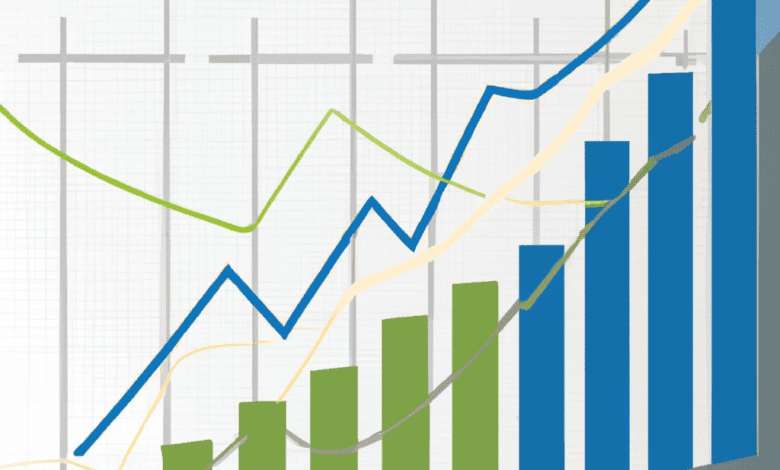Mastering Currency Trends: A Guide to Predicting Movements Using Economic Indicators

In the fast-paced world of currency trading, the ability to accurately predict currency movements can be the difference between substantial profits and significant losses. One of the most powerful tools at a trader's disposal is the analysis of economic indicators—key metrics that reflect the health of an economy and influence currency values. Understanding these indicators is crucial for anyone looking to navigate the complexities of the foreign exchange market. In this article, we will demystify economic indicators, exploring the vital metrics that drive currency fluctuations and how to interpret them effectively. We will also provide practical strategies for traders to leverage this data, enabling informed decision-making in a constantly evolving market. Whether you are a seasoned trader or a newcomer to currency trading, this comprehensive guide will equip you with the insights needed to enhance your forecasting abilities and capitalize on market opportunities.
- 1. **Understanding Economic Indicators: The Key Metrics That Drive Currency Values**
- 2. **Interpreting the Data: How to Analyze Economic Indicators for Currency Forecasting**
1. **Understanding Economic Indicators: The Key Metrics That Drive Currency Values**
Economic indicators are critical tools for traders and investors seeking to understand and predict currency movements. These indicators provide insights into the health of a country's economy, influencing market sentiment and currency valuation. By analyzing key metrics, one can gauge potential trends and shifts in currency values.
One of the most significant economic indicators is Gross Domestic Product (GDP), which measures the total economic output of a country. A growing GDP typically signals a robust economy, attracting foreign investment and strengthening the national currency. Conversely, stagnant or declining GDP can lead to currency depreciation as it raises concerns about economic stability.
Inflation rates, measured by the Consumer Price Index (CPI) and Producer Price Index (PPI), are also vital. Central banks often adjust interest rates in response to inflation trends, influencing currency strength. A rising inflation rate may prompt a central bank to increase interest rates, which can attract foreign capital and bolster the currency's value. On the other hand, low or negative inflation can lead to lower interest rates, weakening the currency.
Employment figures, particularly the unemployment rate and non-farm payroll data, are key indicators of economic health. High employment levels typically correlate with increased consumer spending, driving economic growth and supporting currency strength. Conversely, rising unemployment can signal economic distress, leading to currency depreciation.
Trade balances, which examine the difference between a country's exports and imports, also play a crucial role. A trade surplus indicates that a country exports more than it imports, often leading to currency appreciation due to higher demand for its goods and services. A trade deficit, however, may result in currency depreciation as it reflects a reliance on foreign goods and potential outflows of capital.
Interest rate decisions made by central banks, such as the Federal Reserve or the European Central Bank, are among the most influential indicators affecting currency values. Higher interest rates typically attract foreign investment, driving up demand for the currency. In contrast, lower interest rates can lead to capital flight and a weakening currency.
Finally, geopolitical events and market sentiment should not be overlooked. Economic indicators often interact with political stability, government policies, and global market trends, which can lead to sudden shifts in currency values. Investors must remain vigilant regarding these factors, as they can amplify or dampen the effects of economic indicators.
In conclusion, understanding these key economic indicators is essential for predicting currency movements. By closely monitoring GDP, inflation, employment figures, trade balances, interest rates, and geopolitical developments, traders and investors can make informed decisions that enhance their strategies in the currency markets.
Economic indicators play a crucial role in predicting currency movements by providing insights into the overall health of an economy. These indicators are statistical measures that reflect the economic performance and trends of a country, influencing investor sentiment and market behavior. Understanding how to interpret these indicators can help traders and investors make informed decisions about currency trading.
One of the primary indicators to consider is Gross Domestic Product (GDP), which measures the total economic output of a country. A growing GDP typically signals a robust economy, attracting foreign investment and increasing demand for that country's currency. Conversely, a shrinking GDP may indicate economic troubles, leading to a depreciation of the currency.
Inflation rates, measured by indices such as the Consumer Price Index (CPI) and the Producer Price Index (PPI), are also significant. High inflation can erode purchasing power and may prompt central banks to raise interest rates to combat it. This potential increase in interest rates can attract foreign capital, thereby strengthening the currency. On the other hand, low inflation coupled with stagnant growth might lead to lower interest rates, weakening the currency.
Employment data, particularly the unemployment rate and non-farm payroll figures, serve as additional indicators of economic health. A low unemployment rate generally reflects a strong labor market, which can lead to increased consumer spending and economic growth. This positive outlook can bolster confidence in the currency. Conversely, rising unemployment can signal economic distress, negatively impacting currency value.
Central bank policies and interest rates are pivotal in currency valuation. Traders closely monitor central bank announcements and decisions regarding interest rates. A central bank that signals a tightening of monetary policy often sees its currency appreciate, as higher interest rates can attract foreign investment. In contrast, an easing of monetary policy usually results in a depreciation of the currency.
Trade balances and current account figures are also worth analyzing. A country with a trade surplus (exports exceeding imports) typically experiences a stronger currency, as foreign buyers must purchase the domestic currency to pay for goods. Conversely, a trade deficit can lead to currency depreciation, as it indicates that a country is spending more on foreign goods than it is earning from exports.
Additionally, geopolitical events and market sentiment can influence currency movements, often amplifying the effects of economic indicators. For instance, political instability or uncertainty can deter investment and lead to a flight to safe-haven currencies, regardless of the underlying economic data.
In summary, leveraging economic indicators to predict currency movements requires a comprehensive understanding of how these indicators interact with one another and influence market sentiment. By staying informed about economic trends and central bank policies, traders and investors can make more strategic decisions in the dynamic world of currency exchange.
2. **Interpreting the Data: How to Analyze Economic Indicators for Currency Forecasting**
Interpreting economic indicators is crucial for forecasting currency movements, as these indicators provide insights into the economic health of a country and its potential future performance. To effectively analyze these indicators, traders and analysts typically follow a structured approach.
First, it’s essential to understand the different types of economic indicators and their implications. Economic indicators can be categorized into three main types: leading, lagging, and coincident indicators. Leading indicators, such as consumer confidence and housing starts, provide foresight into future economic activity; a rise in these indicators often suggests an upcoming economic expansion, which can lead to an appreciation of the currency. Lagging indicators, like unemployment rates and GDP growth, confirm trends that have already occurred, while coincident indicators, such as industrial production, move in tandem with the economy. Recognizing the type of indicator being analyzed helps in assessing its relevance to currency forecasting.
Next, consideration of the indicator's context is vital. An indicator's significance can vary depending on the current economic environment and geopolitical factors. For instance, a slight increase in inflation might be interpreted positively in a robust economy but could raise concerns in a struggling one. Additionally, comparing an indicator against previous data and market expectations is crucial. If a country's GDP growth rate exceeds forecasts, it may lead to currency appreciation, while disappointing results can trigger depreciation.
Moreover, the interplay between multiple indicators provides a more comprehensive view of economic conditions. For instance, if consumer spending rises alongside falling unemployment rates, these indicators collectively suggest a strong economy, potentially bolstering the currency. Conversely, conflicting signals, such as rising unemployment alongside increasing consumer confidence, may create uncertainty and volatility in currency markets.
It is also important to pay attention to revisions of data. Initial reports are often subject to revisions, which can lead to significant shifts in market sentiment. Traders should monitor how these revisions impact the broader economic narrative and adjust their currency forecasts accordingly.
Finally, understanding market sentiment and the reaction of traders to economic data releases is key. Currency markets are influenced not only by the data itself but also by the expectations leading up to the release and the subsequent interpretation by market participants. An indicator may produce a strong result, but if traders had anticipated even better performance, the currency might still weaken. Therefore, tracking the consensus forecasts and the resulting market reactions is essential for refining currency predictions.
By systematically analyzing economic indicators through these lenses, traders can enhance their ability to predict currency movements and make informed trading decisions.





